#her getting with Hama post series would have made more sense
Explore tagged Tumblr posts
Text
Okay so one thing I've never gotten in atla that always read as men not thinking and writing up some bullshit is Kanna getting back with Pakku. And some of this is fueled by my inherent dislike of the white Lotus but like come the fuck on.
Like I'm not saying I don't think she doesn't still care about him or their past relationship. She did in fact keep his necklace. But she left him behind because he supported the sexism in the NWT. She didn't just leave the tribe she's implied to specifically have left because of the upcoming marriage given the necklace was carved already.
Not only that, while she saw her new home tribe oppressed and destroyed by the fire nation, watched her friend, the last southern waterbender, carted away in chains, watched as her daughter in law sacrificed herself to save her child the sole waterbender born after the raids and left alive, he hid behind a wall and upheld the society she left because of how it harmed her. Her son left to fight in this war when no one would have blamed him for staying behind to protect what was left of their family, but Pakku only fights after the CHILD avatar comes back. And the whole point of the White Lotus is to train and support the avatar which don't even get me started on that and how the White Lotus has a member in the NWT but Hakoda isn't dealt in as an active participant in the war efforts. Because this organization could have actively resisted the FN before Aang returns but given one of their big members is the guy who literally was know for being such a dangerous general who tore down one of Ba Sing Se's walls not 10 years earlier, I doubt they were given they just let Iroh get super high up and we're never actually shown them doing anything outside of helping Aang train and showing up after hes done all the resistance, instead choosing to just idle about with one notable exception in the fucking role playing game. And if you want to argue they were doing more that should have been shown. But all we get are some winks that old men talk to eachother, iroh gets some passports, and the day of sozins comet.... anyways back to Pakku.
So given all that context around him plus! The fact he doesn't even initially train Katara(the only southern waterbender whose trying to reclaim her culture by any means) until he realizes his ex gf is her grandma.... like he doesn't reflect that maybe he needs to change until he realizes she doesn't even care enough to mention him and he's been pining and upholding patriarchy while she moved on.
But fine he accepts Katara and her work ethic and she's his star pupil so it's resolved right? NO BECAUSE HES A FUCKING ASS TO SOKKA!? Like he wants to get back with this woman, and begrudgingly accepts her prodigy waterbending granddaughter but actively rejects her nonbending grandson who is a key figure in ending the war. The grandson who reflects her son and most likely her first husband. The one she actually wanted to be with.
And you could argue that Pakku is just being played as the straight man against Sokka, which is fine but we never see him show any kind of fondness for him unless I'm misremembering their interactions and a whole scene. I also think it's weird to pull the "and she gets back with him before the day of the comet" because what?
Honestly tldr Kanna could do so much better. This woman raised three of the key players in ending the war, is a badass midwife, a respected elder, and is portrayed as taking no shit as she keeps her people together. And yet she ends up with mister "has no game, barely respects women, and waited for children to step in to end the war"? There's no way she couldn't pull a ton of suitors from all over the world, I just don't think it's realistic she would settle after already leaving his ass once.
#atla#man i dont even like hate pakku as a character#he makes sense#and i totally believe hed want to get back with her#i just dont see her springing as eagerly for him#her getting with Hama post series would have made more sense
5 notes
·
View notes
Text
AtLA Rewatch Notes 1x01
so I was taking notes while rewatching yesterday and I needed somewhere to dump them so,,
heads up I’m probably gonna do this for the full series
also: potential spoilers for full series (key word here is rewatch, folks)
also this has little to no coherency and is essentially just a stream of consciousness and stray thoughts
ngl i still love this intro
THEY’RE JUST!! BABIES
this art style has just always instantly grabbed me
I know ppl have talked about this before already but sETTING UP THEIR ENTIRE ARCS IN THE FIRST LIKE SIXTY SECONDS POST INTRO
does anyone else wonder who Hakoda’s dad was since a grandfather was never mentioned and Kanna didn’t marry Pakku or
catch Katara yelling instructions but not trying to help at all?? she grows honey
catch Sokka being a sexist jerk?? he grows honey
YES KATARA GO OFF
ok but Katara’s growth from her anger causing such extreme, large, accidental incidents as splitting a wholeass glacier down the middle to causing extremely intentional, purposeful, small and complex things like stopping all the rain in the area in its tracks and bloodbending someone to their knees
like,, we been knew but they can all be absolutely terrifying if they want to
how many times do you think Zuko traveled through the South Pole and the world?? I know Iroh could just be using an expression and not be serious when he says ‘we’ve been down this road before’ but the Gaang did pretty much travel the entire world over in less than a year, and Zuko’s been searching for three??
no one ever taught Aang about ‘stranger danger’ huh
Sokka going from freaking out when Appa sneezes on him and frantically trying to wipe it off on the ground vs. Sokka climbing into Appa’s mouth and just kinda chillin when he’s drooled out alsldfkdskj
“midnight sun madness” makes me think,,, do y’all think Katara and Sokka at some point realized that most other places in the world have both day and night on the regular throughout the whole year and were like. what.
like I mean yeah they probably knew but it’s a lot different knowing and actually experiencing y’know??
like when they see Omashu they’re like “they have buildings here that don’t melt??” and like. yeah they probably already knew that those were a thing but it’s such a new thing for them
(also off topic but that line didn’t really make sense bc yeah Omashu was one of the first cities/villages/towns they went to w people living in it with buildings that didn’t melt but it wasn’t the first? that was Kyoshi Island man)
also do you think they got to the North Pole and were like. It’s not supposed to be this sunny/dark out at this time of year?? What hemisphere are y’all livin in lmao
“...oh wait”
is there even proof that the atla world isn’t flat
Aang acting vs. Aang lying
I mean ngl he kinda sucks at both but there’s still a significant difference in skill level
like when he took on that role to get into Omashu vs. when he tried to convince Katara he didn’t know what happened to the avatar
but I mean he’s kind of right when he says “i didn’t know him”?? Like he never got the opportunity to learn what that role meant for him or really get to know himself very well because he is just twelve yo
also yes Aang has nightmares love the reminders that this bby is terrified and anxious and overwhelmed by the whole situation even before he becomes traumatized and gets all his Big Responsibilities isn’t that fun
do y’all ever think about what happened to the little kids in their village?? no?? just me? ok
also when Gran-gran essentially gives her approval to go to the North Pole she knew what they were getting into for when they got there didn’t she? she knows what their customs are like and that there’s a high chance they’re going to run into Pakku, doesn’t she? so either she’s hoping that they’ve made some progress (and maybe they have, it’s just still not far enough) in the time that she’s been gone, or she’s counting on Katara putting them in their place and earning their respect and Sokka backing her up
and in that case
we stan tbh
KATARA RECOGNIZING THAT BENDERS OF DIFFERENT ELEMENTS CAN LEARN A LOT FROM EACH OTHER EVEN BEFORE WE LEARN THAT LESSON FROM IROH
I love how easily and subtly they’re fleshing out the magic system in the very first ep w Iroh training Zuko and Aang explaining his glider to the kids
I love the idea of penguin sledding but it,, seems lowkey terrifying and unethical
“I haven’t done this since i was a kid” BABY NO
AANG IS RIGHT YOU STILL ARE A KID
“...and a very bad memory for my people” like I know this seems like such a throwaway line and doesn’t seem like much especially w all the other fire navy ship content but this is lowkey great setup for Hama’s memories… like nobody would want to remember that or talk about it so it makes sense that they never really discuss it until then but it really was horrible and when you see Hama’s story just that little thing in the back of your mind clicks and with just this one little scene so much earlier that most of us probably forget about it’s less holy shit plot twist what a surprise didn’t see that coming and more kind of like just a very sobering, horrible ...oh. and I think that that carries a lot more weight.
“If you wanna be a bender, you have to let go of fear” but just,, how well that sets up his dilemma with firebending and Katara breaking him out of that... he taught her that lesson first, and then she made sure he remembered it. also,,, The Guru foreshadowing?? (nah I’m probably just looking too far into it but whatever)
ok wait but she said “since Gran-gran was a little girl” so is she just kind of exaggerating or did Kanna move there post-raids and it really was technically since before she got there?
in which case do you think that’s part of why she didn’t think Pakku would follow her there, bc there were no benders anymore, or only a couple? And do you think that’s part of the reason Pakku didn’t? Like it seems like they haven’t had much contact with them at all, maybe they had no idea how bad it was at all and kind of assumed at the time that, why would she go to their sister tribe when it’s constantly under attack and basically on the verge of decimation? There are so many other places she could’ve gone, and he would’ve had no idea which one she would’ve chosen, because why would she go to both the most obvious choice and the least logical option? (Which also brings up the question of would/did he try to follow/look for her at all??) ((I’m not tryna make excuses for him at all but I like thinking about the thought processes and logic))
1 note
·
View note
Text
Around the World with Vintage - Tanaka Kiyomi (Akanesasantique)
The best thing about being a vintage girl in the modern world is having the internet and finding other kindred souls from other parts of the world. This month on the Around the World with Vintage series we visit the coastal Yokohama in the beautiful Japan.When I came across Kiyomi whose wardrobe constantly turns me green with envy I just had to learn more about her. The way she puts together her outfits is artistic and detailed and now that I know what she does for living it totally makes sense. She graces my Instagram feed regularly with her posts at Akanesasantique and we chatted about the vintage trends in Japan and how the World War II affected the fashion movement there.
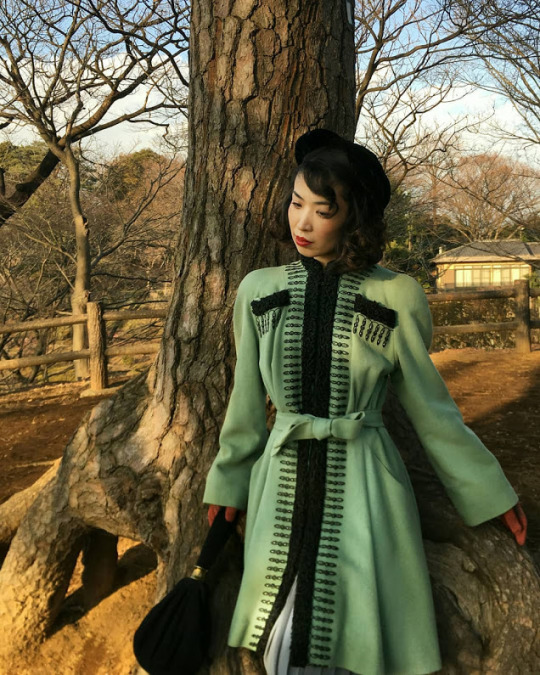
Tell us about yourself
I’m a 38 year old vintage enthusiast, pianist, lover of art. I was born in Tokyo and spent my childhood, in the late 80s, in Los Angeles. I studied classical piano at a collage in Tokyo, and a conservatoire in France. I lived near Versailles for 5 years. During that period, I encountered early 1960s fashion that inspired me to start wearing vintage clothing. I used to frequent booksellers along the Seine river, and bought a lot of old magazines such as ELLE and Modes et Travaux.
Do you live in Yokohama? As a seaport town people are probably dressed more casually do you think there’s a big different between Yokohama fashion to Tokyo or Osaka/Kyoto?
No. I don’t think that people in Yokohama dress more casually than people in other towns. Yokohama has always been an elegant town rather than casual. There was a fashion movement called HAMA TORA(=YokoHAMA TRADditional style) which encouraged classic and elegant dressing. It originated in a university in Yokohama in the late 1970s but this specific style lost popularity in the 90s when the university moved location. In addition, as fast fashion become popular, Yokohama loses is individuality like other cities. Unfortunately, I’m not very familiar with Osaka/Kyoto fashion though I have heard that Osaka fashion is bolder than Tokyo.
Japan is a very fashionable country and vintage has gained popularity but mostly people combine vintage with modern pieces or go for a specific style like rockabilly rather than wearing vintage authentically. You have however chosen to stick to a more authentic style. Why have you chosen to do so and how do people react to your looks?
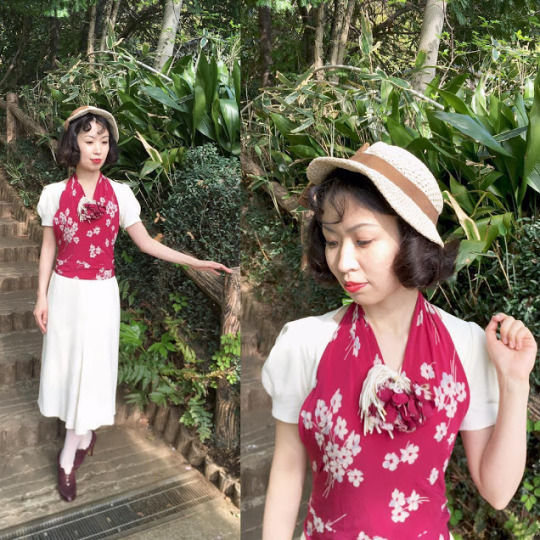
My closet mainly consists of clothing between 1930s and 1940s.The 1930s is important era in cultural history of 20th century. Replacing culture of 19th which had been ruled by aristocrats and landlords, new cultural trend had arrived. Through this era, the base of contemporary fashion style and dress code had been matured. I really did not want to be a COSTUME player who turns away from the modernity of after WW1. At the same time, recklessness of today’s fashion, which is not constrained by any dress code, brings discomfort to me. Meanwhile, there are many kinds of clothing in my closet. The dress used to be owned by a duchess, casual homemade dresses in war time era, and an old stock dress of mail order catalog company, .etc. I love everything of these dresses, the fabric, the sense of colors and the delicate sewing details are amazing. I enjoy mixing and matching them but I’m not concerned with those original value. So, my way of wearing vintage is absolutely free and based on modern spirits not obeying customs in past. I feel like that is a real pleasure of dressing vintage in our modern time.
My vintage looks often attract attention of others, especially on historical tourist spot like a classic hotel. Sometimes I get compliments from fashionable elderly persons and kids.
What do you think about vintage shopping in Japan? I mostly see 1960s and 1970s Japanese vintage clothing but never found any older pieces. Why are they so rare?
There are many vintage shops in Japan. However, I don’t often go to local vintage shop in recent years so I don’t know a lot of them. All I can say for sure, most of vintage items in those shops are clean, easy to wear for vintage beginners. Though they seem more pricey than other countries.
It’s actually impossible to come across the true Japanese vintage as most was destroyed in the WW2. The life of Japanese people was hard for several years after war. For these reasons Japanese vintage before ready-made clothes became popular (before 1960s) very rarely exist in fact.
Are vintage clothes are popular in Japan? Is there any particular style that is more popular than others? I often see rockabilly vintage girls but not as many from earlier decades like you?
No. not really popular. Certainly we see many second-hand clothing stores for re-use, but they are not so fashionable. There are also no one specific popular styles among vintage lovers in Japan. Why not earlier decades? In my personal opinion, modern people tend to prefer loosely clothes with stretch material rather than tightly fit. The vintage clothing before 1950s is cut closer to body. I guess it would be hard to accept its characteristic silhouette.
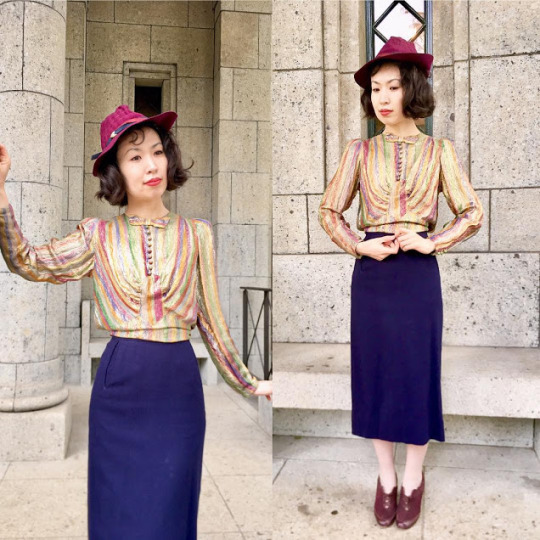
How do you feel about mixing vintage with modern clothes? I have seen numerous times Japanese women wearing vintage bed jackets as summer cardigans with jeans but rarely see head-to-toe vintage pieces.
That actually seems difficult for me. I feel that mixing vintage and contemporary clothes is more difficult than mixing different eras of vintage together. Modern mass-produced clothing doesn’t easily match with vintage. There is a great difference in fabric, pattern and sewing method between them. In contrast, I wear sometimes tailor-made clothes, they are also modern clothes and not are vintage reproductions, though they go well with vintage.
What do you think are the most sought after vintage pieces in Japan?
That’s hard to say. Because vintage lovers in Japan have respective originalities and strong tastes. Some like rockabilly vintage, some wear American or European vintage with antique kimono, and others mix 1970s vintage and modern jeans, etc. The list is endless. Their needs are too various, more complex than general people. So, I can’t think of any right answer.
Is there a lot of WWII memorabilia still around in Japan? What about WWII-related clothing such as uniform? What is the general sentiment regarding these pieces?
Nowaday we can’t really see WW2 memorabilia. Japan is a defeated country. Most of Japanese are conscious of a feeling of negative heritage about WW2. However, the prewar memorabilia remain even now. For example “Sailor fuku” (=sailor style uniform) for high school girl and graduation gown for female university student, consisting kimono and overskirt called “Hakama” were born in this era, they are still generally worn today . The pre-war Japan was very rich in culture.
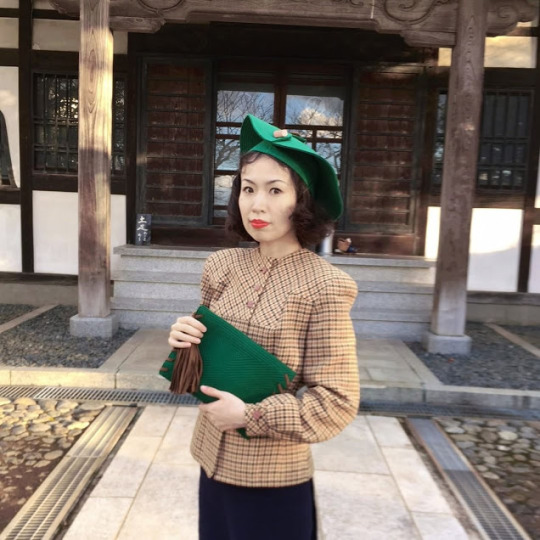
We don’t see a lot of Asian vintage girls around, why do you think that is and do you have any advice for any other Asian girls who want to start wearing vintage?
In Asia, there used to be no role models of western fashion because of the undeveloped mass consumer culture. As an exceptional case, in Japan, western fashion lifestyle has become accepted ever since the prewar era . Nonetheless, for many Asian people, vintage clothing is still new culture.
If I was to give some advices for Asian girls who want to start wearing vintage: find a good quality shop and with knowledgeable owner. For beginners, it is not easy to buy vintage online, better to getting advice from experts . I myself havelearned many things from them.
If there is one thing that you want people to know about you, what will that be?
Since I started Instagram and etsy shop in 2016, I’ve met many vintage lovers all over the world. I’ m very content with my vintage fashion life. Furthermore, I’m thinking that I would like to embody the composite art that combines the fashion and music of olden times. Because the base of my aesthetic always presents in the music, though I am attracted to a lot of fields.
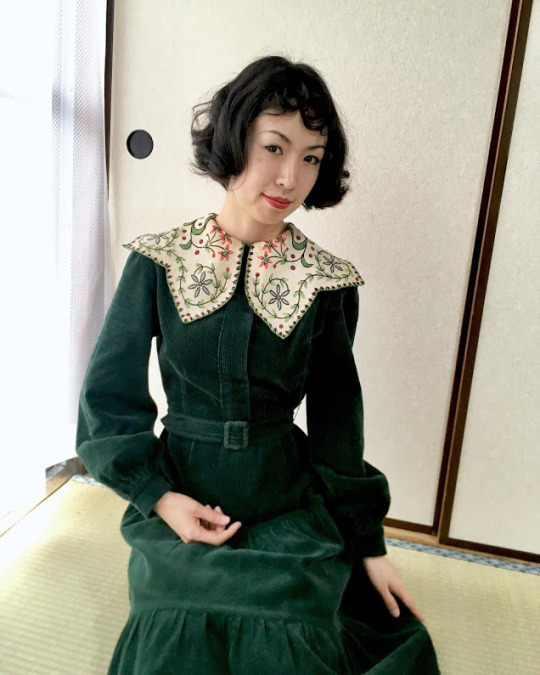
#around the world with vintage#atwwv#tanaka kiyomi#akanesasantique#interview#vintage girl#japan#japanese#yokohama#vintage
8 notes
·
View notes
Photo

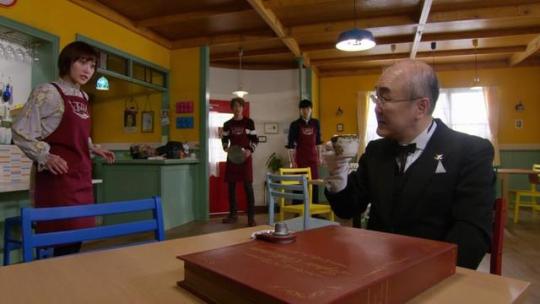

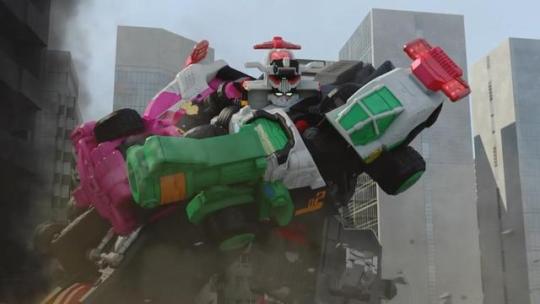
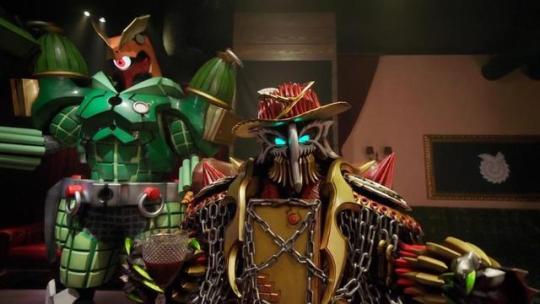
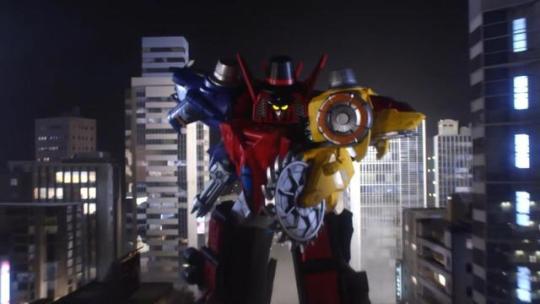
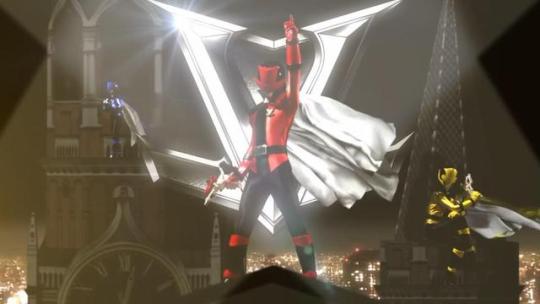
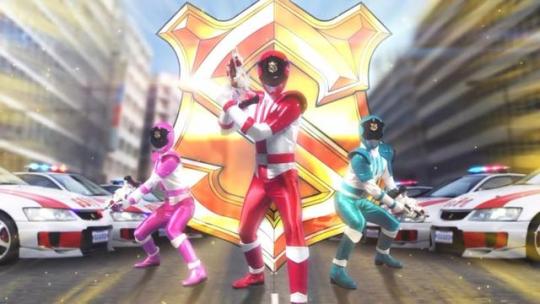
Advance Notice: Behold, for this is my first monthly review for "Kaitou Sentai Lupinranger VS Keisatsu Sentai Patranger"...
I had planned on publishing a First Impression post when this show premiered on February 11th, 2018, but I ended up scrapping that idea due to several reasons. I figured I should just go ahead with the review for the first episode having seen it with subs, but another hurdle came barging on my way (forcing me to be off the grid for a brief amount of time prior to my latest post) to the point that now I practically have watched 3 subbed episodes already. LOL. So as you can see, I've finally decided to just convert it into a monthly review (consisting of episode 1 to 3 that aired Sunday, February 25th) for the series anyway. Not unlike what I did with "Kamen Rider Build", of course. But there's a catch! Since I don't want my efforts for the First Impression to go to waste, I'm going to start with them first before heading directly to my Overall thoughts on each episode. Okay then, here goes...
First Impression
NOTE: Another reminder before I start. This list was written as soon as I finished watching the first episode. It contained my personal notes and INITIAL reactions to the story, theme, and also characters, some of most definitely have more or less evolved since then. So if it might sound a bit outdated, that's just the way it is. Can't help it, these were from three weeks ago... XD - Phantom Thief? More like... burglar. I'm talking about the premiere's opening sequence, that is. While it was designed to be cinematic, to me it also felt like a missed opportunity. The writer for this episode (was it lead writer Junko Komura?) probably forgot or got him/herself confused on the basic rule of a 'Kaitou'/Phantom Thieves. What made a Phantom Thief different than regular thieves or pickpockets, was in their modus operand of sending/handing out notice way ahead of their operation in order to challenge the owner of the item. Hence why it is called ADVANCE NOTICE. Moreso, they would infiltrate the target location meticulously and secretly using tricks and deceits while naturally avoiding to cause too much of a fuzz as much as possible. Those are the basics of a Phantom Thief. If you're uninformed and curious to see how this plays out, look no further than towards the many Kaitou Kid-centered story arcs in "Meitantei Conan", or the children show "Mysterious Joker". Even the heist aspect of Marvel Studios' "Ant-Man" fit in perfectly in this method. - This show DID capture the extravagant and stylish flairs of Phantom Thieves in this opening sequence. It was undoubtedly a flashy scene. But the biggest issue here was they did NOT give off an advance notice to the Casino boss, who was, in fact, the first Gangler or MotW of the show. A missed opportunity, because they could have easily inserted that bit in a quick dialogue or two. Breaking and entering, proceeded by shooting randomly at things to retrieve their target was clearly NOT the style of a Phantom Thief. Nope, this was plain robbery or burglary at play. Huge difference, right there! LOL. Handing out a calling card afterward would be considered pretty much useless because it could no longer count as an 'Advance' notice (get it?). The later mission of the episode was better, as it required a good amount of sneaking and sleuthing. No sign of advance notice though, so what a shame *sigh*. Even if this show hasn't managed to get the thieving part correctly, it was pretty apparent that the source of inspiration for the Lupinrangers was the iconic series "Lupin the 3rd". At the very least, I'm instantly reminded of that series every time they got out in action, both in or out of suit. - Oh yeah, there's another missed potential regarding that opening sequence. In this case, it's a bit technical. Debuting the theme song of "Lupinranger VS Patranger" in the first episode sounds natural, right? Well, that should've been the case. Yet when it was played WITHOUT having the Patranger around... it bugged me big time. I personally think they should have either: used the Lupinranger-only version in that scene. Especially because the Patrangers didn't even have the ability to transform until the closing scene. Or...; rewrote the scene and have it showcase both teams at the same time, fully in costume. I know the Lupinranger is first-billed, but if I were this episode's writer, I would totally use the theme song during an actual kerfuffle between the two teams. For example, in that brief part before the episode wrapped? Heck, the episode could've started with that before going into flashback mode or some sort. It would have made a major difference if you ask me... - Characters!!! I know I should never judge a book by its cover, but seriously, Kairi Yano (LupinRed) is unappealing and squeaky. No wonder some folks were surprised that his actor Asahi Itou could be appointed as Red. Plus, it's clear he still needs to improve his acting skill, with all those constant unnerving glares. Touma Yoimachi (LupinBlue) is the usual cool type, who this time gets mixed up with the chef trope. Think of it like Kyuranger's Stinger and Spada in one body. For some reason, Shougo Hama reminded me of Kamen Rider Ibuki or Mamoru Chiba from the live action "Sailor Moon" series. I think Umika Hayami (LupinYellow) is the most likable member of the Lupinranger, albeit being the usual bumbling 'my pace' girl. It felt that graduated Morning Musume member Haruka Kudo's deep affection to tokusatsu really showed, as she looked the most comfortable in her shoes. Their names combine into 'Kai-To-u'. - Keiichirou Asaka (Patren 1-gou) is undoubtedly the better Red for me so far. I sensed that Kousei Yuuki was also more convincing as an actor than Asahi. Unfortunately, Keiichirou is also the loud brash stereotype (kind of reminds you of Go Yellow, huh?), so he and his mysterious endless rage and anger will either impress you or grate on your nerves. The same couldn't be said about the other Patranger members. Sakuya Hikawa (Patren 2-gou) and Tsukasa Myoujin (Patren 3-gou) are nothing more than... generic stereotypes in the premiere. For now at least. Which was disappointing, because Ryo Yokoyama and Kazusa Okuyama (who somehow reminded me of Red Racer and Go-On Silver) could only do so much with the limited materials they were given. These two are likely the lesser important characters (Super Sentai always have ones), which says a lot about the Patranger's position. None of these three managed to... grab my attention, because aside from a stubborn hot-blooded Keiichirou, the other two could be considered as bland. Just like the Lupinranger, their names combined into 'Kei-Sa-Tsu'. - Youichi Nukumizu's Kogure and Ike Nwala's Commisioner Hilltop are the show's MVP for me thus far. In Kogure's case, the air of mystery and elusiveness easily stole my attention and made me want to see more. I think he could work as a secret big boss vibe pulling the strings behind the scene, though it would likely end up as some kind of Alfred Pennyworth scenario instead. Likewise, Hilltop showed hints of eccentric personality due to his Japan Culture-obsessed hobby (mirroring "Sakura Taisen V"'s Sunnyside). I can't help but wonder if he's meant to be the Jim Gordon of the show? It also helped that he joined the limited list of foreign actors who played a crucial role in a tokusatsu show. I hope these two will have bigger and more important roles in the future... as suggested by that recent rumor. Sadly, I couldn't praise the same about Jim Carter (voiced by Rie Kugimiya), the Global Police's mascot robot. I disliked its design, and see no actual use of it. Not to mention that name. Why TOEI, just why? - Comparing these two teams have always been an ordeal since I saw their first images. Each one has their pros and cons that sort of balanced my impression on them. I liked the Patranger cast better, but those suit design totally threw me off the table. I dig the style of the Lupinranger suit, but feel mixed about its actors. It's clear however, that the Lupinranger was put center front in the premiere (as evident by the flashy top-hatted transformation sequence and cool silhouetted roll call), to the point that the Patranger was basically just... there. Thus it felt somewhat premature and unfair to compare them due to the state they are right now. Not surprisingly, the scene in the Bistrot Jurer was executed better than the one in the GSPO's Tactical Unit Operations Room. The latter just looked more... fake somehow *sigh*. - Speaking of suits, Patranger likely had inspirations from "KyuKyu Sentai GoGoFive", "Tokusou Sentai Dekaranger", with a hint of "Go Go Sentai Boukenger". Sadly, these are not as good as those three. The Lupinranger ones are clearly a "Mirai Sentai Timeranger" nod, complete with that giant hands of clock-shaped swords that reminded me of the Vector Swords. Still, they should've gone with a long coat tail like in the transformation sequence (Zyuoh Whale and Draco Commander style). That would've made for a more elegant look. - I'm not that fond of the design for the show's main antagonist (a mixture of dinosaur and... guns?). Not the grenade-inspired but watermelon-looking Destora Mazzio (voiced by Pokemon's Brock himself, Yuuji Ueda), and particularly the hideous Goshu Ru Medu (voiced by "K-ON!"'s Ayana Taketatsu). Perhaps it's the way that every Gangler needs to include a safety box on their body that made them look... I don't know, silly? On the bright side, it does have this interesting mafia family style that would provide great potentials assuming it's explored properly. Cues from "The Godfather" movies can be felt from their so-called leader Dogranio Yabun (voiced by Mitsuru Miyamoto), as well as an obvious nod to Don Dolnero of Timeranger. In the case of those Lupin Collection, I'm sure Super Sentai fans would easily be reminded of Boukenger's Precious. - Neat camera works for the action scenes. Some... inventive movements that involved plenty of 360 shots taken from kinetic angles. Unfortunately, they would work much better in a fast-paced viewing. When you slowed the sequence down, it's more than obvious that the transitions between the different cameras (the regular huge and docked one, and possibly a drone/hand-held for the moving parts) aren't exactly as smooth. The switching was more than apparent, because there's an easily noticeable fluctuation in video quality. Not to mention, it did feel confusing to see after repeated viewings. - Last but not least, the absence of an ending sequence could be a make or break situation for the show. Many audience particularly Japanese kids genuinely loved an ending song that they could dance along with. I know that this one felt more mature already without one, but is that really a good thing? We'll just have to wait and see...
01 - "Here Comes the Flashy Burglar / Off-Beat Arrested Development"
Overall: I admit, after seeing this episode again with English subtitle, it was better than my first initial watch. Unfortunately, many of its issues (that I have pointed out above) are hard to overlook and still render my overall judgment. This was meant to be a groundbreaking series that actually features two existing Super Sentai teams at once, yet in my opinion, it ended up feeling more or less like your standard Super Sentai show. It didn't feel that much 'different', despite being taunted/promoted as such. Same old, same old. Most of that is likely due to the fact that the Patranger didn't have equal footing in it when they really SHOULD. Everything this police unit does (always-late appearance, bland characters, unimpressive significance, etc) didn't account much, giving off a distracting vibe that they were merely a set of supporting characters in a Lupinranger show. Seriously, they didn't even have a proper transformation scene and roll call because of how heavily Lupinranger-focused this has been. I'm not fond of police-themed Sentai, to begin with, hence why I already liked it less than other Super Sentai fans. Not saying this debut episode was bad, but more like... not my cup of tea? Didn't win me over? I do get why many are loving it though. This was a breeze of fresh air, especially when compared to the recent WEAK (I'm being NICE here) seasons of "Power Rangers" adaptations. Still, in my opinion, it's a pretty standard premiere, heavy on expositions, and due to its minor flaws, wasn't really on par with previous Super Sentai premiere episodes. On the bright side, if the show's future development is consistent with a recent rumor flying around the internet, then they will be enough to keep me watching this show. Here's hoping...
02 - "Frozen Back-Story / Fudging-Sweaty Fusion"
Overall: If I have to choose one word to describe this episode, that would be easy: HECTIC. Yes, as fittingly represented by the official opening sequence that... in my honest opinion, could have used better editing. The action parts felt busy and rushed, to the point that when it slowed down for the dramatic parts, the episode became uneven. I have this feeling that the debut of the vaguely disturbing Patren Union (defying all kinds of real life logic) was meant to put or even push the Patranger into the spotlight. Heck, they finally got their own flas... er generic roll call now (it still looks bland compared to the thieves no matter how you put it... *sigh*). Unfortunately, it's the drama part that pretty much stole every attention and became the major highlight of this episode. And sadly, it was particularly shining a light towards the Lupinranger... all over again. Yes, Kairi, Touma, and Umika remained to be the first-billed characters, as the show decided to reveal their real motives/goal to collect the Lupin Collection. Which was emotional and VERY personal at best. Hence our supposedly good officers were still being relegated as second fiddle, showing that the show hasn't managed to divide the focus evenly between the two teams. But hey, the Patranger also helped debuted the sentient-chatterbox Good Striker/Goody (voiced by legendary Virgo Shaka himself, Yuuji Mitsuya), right? Only to jumpstart the arrival of Lupin Kaizer when the Collection Piece combined with the Lupinranger's Dial Fighters instead. And while the show's first mecha (which didn't look as good as its design, I can't tell why) dealt with the Gangler in a flashy way, Keichirou, Sakuya, and Tsukasa only stared blankly into the night sky. Oh Patranger, I feel truly sorry for you... Ignoring the fact that it's still an uneven affair, it's indeed a much better episode than the first. It's not perfect by all means, and probably could do with better editing, but that genuinely intriguing backstory honestly did much of the heavy lifting. It's probably the show's best episode so far, though I'm hoping it's not the extent that this show has to offer.
03 - "Fiance on Ice / A Sticky Reinforcement"
Overall: LOL, did anyone actually expect some secret identities to be exposed, just 3 episodes in? That's NOT how Super Sentai works, especially in a full-year extended version of a Versus movie like this. So in that sense, what a pointless cliffhanger that was at the end of episode 2, huh? This intro scene basically answered one lingering concern I had since episode 1. Remember how Keiichirou and Kairi had a civilian stand-off about that newspaper ball in the park early on? If Keiichirou has good photographic memory and critical analysis skill as a competent police officer, he would've instantly recognized Kairi in Jurer. Not just that, he should also recognize LupinRed's voice coming from his mouth. But noooope, that did NOT happen. Frankly, I'm not sure how I feel about this. I just hope this didn't simply mean that Kei, as well as Sakuya and Tsukasa, are being written off as a bit... slow. That would be a disaster! How could one root for them if they are so unreliable? We got more insight into Touma's character concerning his fiance Aya. Not much of a surprise, because the previous episode had openly shown the identities of the frozen closed ones *sigh*. His character now reminds me of Joe Gibken from "Kaizoku Sentai Go-kaiger", who so happens to be sharing a similar cool-blue stereotype. But I'm not sure why there's something off with Touma that I couldn't really put into words. A relentless darkness that is rubbing me the wrong way. Which is strange, because Joe is my favorite Go-kaiger. It felt like Sakuya was probably meant to be the 2nd focus here, or at least meant to have his share of the spotlight. But since the execution was still uneven, still favoring heavily on the Lupinranger side, inevitably the rookie member of the Global Police ended up being eclipsed by both Touma and also Kairi. On the bright side, him showing instant attraction to Umika at the end implied that he's destined to be the awkward but likable goofball of the series. Assuming this angle will be explored in the future, of course. I might be wrong in this, but it felt like the Patranger has gotten the short end of the stick... again. Three times in a row! I mean, when the whole episode established that the Lupinranger will now be using the Patranger as tools to do their bidding, that... kind of says A LOT, right? The thieves (true to their namesake) kept on stealing attention from the public servant (fittingly so), always acting one step ahead of them. And their version of Good Striker's Finishing Move wasn't even better (lamer IMO) than Union to begin with. Even Kogure singlehandedly stole the scenes with his elusive appearances and mysterious relationship with Goody! Marvel Studios carefully constructed a story that enabled "Captain America: Civil War" audience to be divided between the two conflicting teams, but there's none of that here. For the time being, the Patranger only feels more and more like an afterthought, a lesser team that probably shouldn't even get a mention in the title. I don't think that's fair... Oh well, at least their Pat Kaizer debut was great. I can't say why, but it honestly looked much better in action. That's a hugely pleasant surprise! Was it because Lupin Kaizer's battle relied too heavily on CG to showcase its fluid movement? Not really, because Pat Kaizer also had its fair share of CG. Because the battle took place in the daylight? Regardless, the combined Trigger Machines was sturdy and strong. And though I could do without that pink pole stick, this mecha looked impressive overall and just more fun to see in motion. Next Episode: A Closed Room Case...
Episode 1 Score: 7,2 out of 10 Episode 2 Score: 7,8 out of 10 Episode 3 Score: 7,4 out of 10
All images are screen captured from the series, provided by the FanSubber Over-Time. "Kaitou Sentai Lupinranger VS Keisatsu Sentai Patranger" is produced by TOEI, and airs every Sunday on TV-Asahi. Credits and copyrights belong to their respective owners.
#tokusatsu#SuperSentai#lupinranger vs patranger#kaitou sentai lupinranger vs keisatsu sentai patranger#first impression#review
2 notes
·
View notes
Text
The REAL American Heroes!
Click to embiggen.
G.I. Joe: A Real American Hero is one of those titles that you can either hang with, or it’ll drive you nuts. Unless you don’t care one way or the other. (THANKS FOR THE JOKE MITCH!)
Debuting in 1983, it told the stories about an elite team of counter-terrorism soldiers—drawn from every branch of the military—and their arch enemies, the terrorist cabal Cobra (as related on the iconic cover of the very first issue, right).
Based on the Hasbro toy line, it featured characters and equipment that could be called “somewhat unrealistic” at times, but could also be called “balls out insane and awesome”. Which side of that line you fall on will determine how you feel about the comic.
G.I. Joe began as a eponymous comic strip called “Private Breger” in The Saturday Evening Post in 1941 (and has been published in every single decade since). When the Army asked Breger to do a similar comic for Yank, the Army Weekly, he came up with the title G.I. Joe. The comic became toys (and a bunch of other stuff), and the toys in turn gave rise to Marvel’s G.I. Joe: A Real American Hero. I recently re-read the first two years of the comic—24 issues—so here’s some random thoughts.
This is an unabashed military adventure comic. If you set the colorful uniforms and freaky Sci-Fi tech aside, it could well be Sgt. Rock or Sgt. Fury and his Howling Commandos. Combat—including on-screen deaths, as this is the comic, not the Saturday morning cartoon show—is a staple of the series, as are spy thriller set pieces, outrageous terrorist plots, and tense “ticking clock” situations. People who loathe action-centric entertainment will loathe G.I. Joe.
War stories.
The plots and settings are highly varied, right out of the gate. The first issue features an attack by Cobra on a military train to kidnap a nuclear weapons scientist, followed by a sea-air assault on Cobra Island to take her back. Issue #2 centers around an attack on American and a Russian research bases north of the Arctic Circle. A Cobra robot is the main opponent of Issue #3—the Joes brought it back to their HQ, where it reactivated, reassembled itself, and tried to fight its way out of the Pit. Variety is the key to any adventure series (cinematic, illustrated, or prose) and Larry Hama, the main writer of the series, certainly delivered.
The first year is episodic, each issue standing on its own. The start of the second year sees the introduction of running storylines, “story arcs” in the parlance of the industry, meaning that much of the time you can’t read an issue all by itself, you have to catch the whole arc to make sense of the story. Some of the issues suffered from this, being little more than interstitial continuations of previous storylines, lacking a clear plot or a payoff for the audience. In an episodic medium, where people have to wait a month between episodes, this is a significant weakness.
The art of the series was pretty much par for Marvel in the early ’80’s. It took a sharp drop about issue #5, but recovered over the next six or seven issues. (In addition to outright problems with the art, like failures of perspective, it apparently suffered from too-rapid inking, as a lot of the detail in the original pencils seem to have never made it to the page.) By the time the comic really hits its stride at the end of the second year, the art is mostly decent and only gets better from then on out.
The Joes and their foes are all given distinct personalities (many of which were carried over from the toyline), usually with some kind of twist. Roadblock, the black, muscle-bound heavy machine gunner, is also a gourmand and chef; Australian Major Bludd is a vicious mercenary who’s also well read (but an awful poet); Cover Girl, driver of the Wolverine tracked rocket artillery vehicle, is a former world-class model and and a girly girl, regularly checking her hair and makeup. This latter character is allowed to be unsure as she goes into her first combat, is allowed to get help from her male teammates when needed (but stands on her own when not needed), and is allowed to be attractive and feminine. The Joes have characters of all races and both sexes, a fact that just is and is never commented on or made an issue (at least in the first two years). Again, all this sharply contrasts with modern entertainment in so many ways.
In fact, the comic as a whole is far better than anyone would have the right to expect. The writer, Larry Hama, took the time to do research on real world military equipment and tactics, and inserted them wherever he could. He researched the proper checklist for taking off in a Lancaster bomber, plus the procedure to start up one of the engines which was missing a critical component. And inserted both without over-much exposition or a tedious lecture. The focus on accuracy kept the series grounded, lending verisimilitude to the more fantastic elements.
Push-starting a WWII British Avro Lancaster.
Larry Hama may not win any awards for his work on the series, but he’s a much better writer than the phrase “based on the Hasbro toy line” would indicate. He treats the Joes’ world seriously and respects the audience, something rare in any entertainment field (especially lately). He manages to tell interesting, action-filled stories which entertain the audience, the entire point of an entertainment medium.
The apex of the first two years, and perhaps the whole series (after #49-#50), is issue #21, “Silent Interlude”. The entire story is related visually, with no dialogue, internal monologue, or any other word boxes. Everything is communicated through characters’ postures, facial expressions, or actions. Despite this, the issue is dynamic and kinetic. The lack of talky bits forces a focus on the clear and unambiguous depiction of events, at which the comic absolutely succeeds.
Silence.
Modern comics have all-too-frequently become little more than a vehicle for the author’s sexual peccadilloes or political obsessions, and sales have suffered for it. Reading G.I. Joe is a trip back into a time when ideological inculcation was nearly nonexistent, and the only thing that mattered was entertaining the audience. In that, the comic certainly succeeds.
Jasyn Jones, better known as Daddy Warpig, is a host on the Geek Gab podcast, a regular on the Superversive SF livestreams, and blogs at Daddy Warpig’s House of Geekery. Check him out on Twitter.
The REAL American Heroes! published first on http://ift.tt/2zdiasi
0 notes
Photo

A Driver’s License Can be Revoked for the Elderly, but Artistic License? Never.
She was due for retirement. Try telling her that.
Louise Fili, the designer behind logos for Tiffany & Co., Good Housekeeping, Paperless Post, and Sarabeth’s was, as always, a font of great ideas. “I think you should be focusing on the great octogenarians out there — Seymour Chwast, George Lois, Ed Sorel, R.O. Blechman, Bob Gill, Henrietta Condak, Sara Giovanitti…there are so many,” she said in her graceful decline to be a part of this story. “I will be happy to participate when you update the article in, say, 20 years.” Fili is 65, the touchstone — albeit arbitrary — retirement age. Time will tell. But that’s an offer she can make confidently.
Artists exist in careers without reply-all emails about the break room fridge, or dress codes, or — and most importantly — without punch clocks. They are timeless talents.
In 1972, at 90 years old, Pablo Picasso painted “Facing Death,” a self-portrait; he died the next year, having painted since 1891, when he was 9. I.M. Pei, the architect, is set to turn 100 this year as he works on 28 projects in six countries; he’s been working since his designs first caught fire in 1949. “I know how lucky I am,” Roger Angell, then 93, wrote in The New Yorker in 2014, “and secretly tap wood, greet the day, and grab a sneaky pleasure from my survival at long odds.” He has been contributing to the august magazine since 1944, most recently about the Chicago Cubs’ World Series victory, their 108-year championship drought being one of the few things in this world that predate him.
Now 94, Norman Lear is rebooting his 1975 sitcom classic One Day at a Time for Netflix, a Latina spin anchored by Rita Moreno, the 85-year-old EGOT superstar, who plays a 73-year-old sexualized grandmother. Hayao Miyazaki, the anime demigod, has came out of retirement to turn a 12-minute short film titled into a feature-length project, as you do at 76 years old.
There is an element to vocation beyond Western raison d’être, the French “reason for being” mired in Enlightenment sensibilities, that approaches the looser Japanese concept of ikigai, which can be translated as “a reason to get up in the morning” but was best described in a 1990 article in the Japanese business publication The Nikkei (formerly The Nihon Kaizai Shinbun) as “the process of allowing the self’s possibilities to bloom.” That process is itself a craft. Sorry, Tim Ferriss, there is no Four-Hour Ikigai.
These are all-work-and-all-play lives lived in the livelihood of humanity’s lifeblood: art, creativity, design. “To create is to live twice,” Albert Camus famously mused. While that wisdom may have been a gesture at the metaphysical immortality of fame and legacy and the stuff of lifetime achievement awards, it can also be taken literally as the doubling — or more — of creative professional lives as compared to the workaday world’s corporate drones, to say nothing of the relatively fleeting glories afforded professional athletes, dancers, and porn stars. A driver’s license can be revoked for the elderly, but artistic license? Never.
“To create is to live twice.”
“It’s not about doing something well over and over. It’s about doing something new over and over,” said Ivan Chermayeff, the 84-year-old graphic designer behind iconic logos for Barneys, Mobil, National Geographic, NBC, and the Smithsonian. “People who want to retire want to do other things. Travel. Plant a garden. I don’t. I’ve been doing those things every day my whole life. It’s a good racket,” he added from his office, with Wally, his Australian labradoodle barking in agreement at his feet.
Ivan Chermayeff, image courtesy of Chermayeff.
Chermayeff noted the physical costs of activity outweigh the mental and emotional costs of lethargy. “I have a bad knee but thankfully it has very little bearing on graphic design abilities,” he said.
“I was a professor, a teacher. I just stayed in offices. It was awful,” said the prolific architect Daniel Libeskind, 70. “I have lived in reverse, my active period coming after the introspective, reflective period. With architecture, I fell into a new dimension. I made my first building when I was 52! Instead of withering me, time gave me a sense of flowering, of growing. To be honest, I don’t think of aging. There is an immortality to being creative. You are like God, who is the poetic symbol of creation, the poetry of creativity. As your work continues, you become younger. You discover youthfulness — braver, bolder, more confident, more adventurous. You discover possibilities.”
Daniel Libeskind at the Roca London Gallery. Photo courtesy of Libeskind.
Not that it’s easy. “You have to make a conscious decision early on that the suburbs and its finished basements aren’t for you. I had an illegal apartment for ten years, 1971 to 1981, $50 a month in a garret at 55th and 7th. I paid another $50 a month for a work space. So I was free,” said Larry Hama, 67, the comics superhero who single-handedly revived the series G.I. Joe and Wolverine, among other feats. “I’ve had years without any work. But I still did what I wanted. The only difference is I got paid during the working years, which was nice, but it wasn’t the reason I worked.”
There are, of course, life hacks to this Fountain of Youth.
For Libeskind, it is thermodynamics: A body in motion stays in motion. “I’ve lived in 18 cities,” he said. “Sometimes without knowing the language. Sometimes without having a job. Warsaw, Berlin, New York, São Paolo, Milan. They contribute so much energy to your mind. I’ve never been one for the beach or solitary walks in the woods.”
“As your work continues, you become younger. You discover youthfulness — braver, bolder, more confident, more adventurous.”
For Jonas Mekas, 94, the filmmaker who founded Film Culture magazine in 1954 and what would become the Anthology Film Archives in the 1960s, it is cultivating prickliness — not antisocial, just countersocial. “I was an urchin, a sea urchin, covered in spikes. Society could not swallow me. I did not fall into its holes. And those of us who escape enjoy a camaraderie. We don’t have to talk or get together. But we show other people what life is. We lure them into life with the things we make,” he said.
“You want what? That I go to the beach? I hate the beach. For one thing, it’s hard to get an espresso at the beach. And what is there? Ugly, grotesque people indulging their laziness while they cook and bake in the sun like slugs. That is joy? That is freedom? I don’t blame them for retiring at 65 because they have lived as robots in mechanical, menial, tedious tasks. They deserve a few years trying to feel human after all of that. They took my humanity and my youth in the camps. I was 17 in Lithuania and the next day, on the other end of the war, I was 27 in Brooklyn. I will never lose my youth again. I’ve worked too hard all my life to be this young,” Mekas says.
For abstract artist Carmen Herrera, as she puts it, “my bus was slow in coming.” She first sold her paintings in 2004, when she was 89. But what a ride it has been since then. Last year, at 101 years old, she had her first museum retrospective, at the Whitney Museum of American Art. Her secret is her stealthiness. “I was liberated by being ignored,” she said. “I was free to do as I wish.” Not to suggest too much whimsy; asked her morning routine, she laid out her breakfast: “Cafe con leche, toast, butter and jam, orange juice, and work.” And work. As if it were a chewy bagel or bowl of porridge. She devours it. And it nourishes her. But at her own pace. She takes all week to read the Sunday New York Times, favoring the alchemy of its stories over the checklist of the task. Asked what advice she would give youngsters — y’know, people with mere double-digit ages — she spoke in her native Cuban Spanish: “Patience, darling, patience.”
Carmen Herrera in her New York studio. Image courtesy of Herrera.
For Hama, it was saying yes. “Whenever the train got into the station, I got on board. And wherever it took me, when I got there I didn’t want the guided tour,” he said. “I was in an elevator in 1974 and a woman asked me if I was an actor. I said no and she asked ‘Do you want to be?’ And later that day I was in an off-Broadway production of Moby Dick put together by the starlet Jean Sullivan. I was on M*A*S*H and Saturday Night Live. They needed guys and I raised my hand.”
How do you retire from saying yes? “I can’t imagine retiring, and I have a great imagination,” he said. “If I go to the beach and try that, after an hour or so I just feel inert. Life is for action. Wander. Wonder. Surprise yourself. That’s the only adventure. You can’t win the lottery if you don’t buy a ticket. I’ve done, I think, 239 issues of G.I. Joe and never ended with a coming attractions of the next issue because I never knew. I don’t know what’s on page three until I’m halfway through writing page two. And I guess I’ve lived my life like that, too,” Hama says.
“Life is for action. Wander. Wonder. Surprise yourself. That’s the only adventure.”
When he was a child, Mekas’ home would be visited by an old man who climbed his roof and stood on his head on the chimney. He was 100 years old and his upside-downness had a profound impact on Mekas.
“You’re asking all the wrong questions. You’re asking why I’m active at 94. But why are people living like they are already dead at 60? Or 40? Even 30?” he said. “I am not the abnormal one. I am normal. I am alive. This is life. They are the abnormal ones. They just don’t see it because they happen to be the majority, sadly. They believe in patterns that suck out their energy — ads and transactions and labels and paperwork and technology that all tell them they are not enough, that they are behind, that they are lacking. What is retirement or even vacation except a stupid trap built to justify the first trap of this draining existence? I reject it! Instead I choose art! Art and the avant garde is the difference between making a life and mirroring one.”
0 notes
Text
I stand by this still actually.
Okay so one thing I've never gotten in atla that always read as men not thinking and writing up some bullshit is Kanna getting back with Pakku. And some of this is fueled by my inherent dislike of the white Lotus but like come the fuck on.
Like I'm not saying I don't think she doesn't still care about him or their past relationship. She did in fact keep his necklace. But she left him behind because he supported the sexism in the NWT. She didn't just leave the tribe she's implied to specifically have left because of the upcoming marriage given the necklace was carved already.
Not only that, while she saw her new home tribe oppressed and destroyed by the fire nation, watched her friend, the last southern waterbender, carted away in chains, watched as her daughter in law sacrificed herself to save her child the sole waterbender born after the raids and left alive, he hid behind a wall and upheld the society she left because of how it harmed her. Her son left to fight in this war when no one would have blamed him for staying behind to protect what was left of their family, but Pakku only fights after the CHILD avatar comes back. And the whole point of the White Lotus is to train and support the avatar which don't even get me started on that and how the White Lotus has a member in the NWT but Hakoda isn't dealt in as an active participant in the war efforts. Because this organization could have actively resisted the FN before Aang returns but given one of their big members is the guy who literally was know for being such a dangerous general who tore down one of Ba Sing Se's walls not 10 years earlier, I doubt they were given they just let Iroh get super high up and we're never actually shown them doing anything outside of helping Aang train and showing up after hes done all the resistance, instead choosing to just idle about with one notable exception in the fucking role playing game. And if you want to argue they were doing more that should have been shown. But all we get are some winks that old men talk to eachother, iroh gets some passports, and the day of sozins comet.... anyways back to Pakku.
So given all that context around him plus! The fact he doesn't even initially train Katara(the only southern waterbender whose trying to reclaim her culture by any means) until he realizes his ex gf is her grandma.... like he doesn't reflect that maybe he needs to change until he realizes she doesn't even care enough to mention him and he's been pining and upholding patriarchy while she moved on.
But fine he accepts Katara and her work ethic and she's his star pupil so it's resolved right? NO BECAUSE HES A FUCKING ASS TO SOKKA!? Like he wants to get back with this woman, and begrudgingly accepts her prodigy waterbending granddaughter but actively rejects her nonbending grandson who is a key figure in ending the war. The grandson who reflects her son and most likely her first husband. The one she actually wanted to be with.
And you could argue that Pakku is just being played as the straight man against Sokka, which is fine but we never see him show any kind of fondness for him unless I'm misremembering their interactions and a whole scene. I also think it's weird to pull the "and she gets back with him before the day of the comet" because what?
Honestly tldr Kanna could do so much better. This woman raised three of the key players in ending the war, is a badass midwife, a respected elder, and is portrayed as taking no shit as she keeps her people together. And yet she ends up with mister "has no game, barely respects women, and waited for children to step in to end the war"? There's no way she couldn't pull a ton of suitors from all over the world, I just don't think it's realistic she would settle after already leaving his ass once.
#atla#man i dont even like hate pakku as a character#he makes sense#and i totally believe hed want to get back with her#i just dont see her springing as eagerly for him#her getting with Hama post series would have made more sense tbh
5 notes
·
View notes